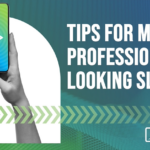Anticipate Audience Needs with Your Business PowerPoint Presentations
“If I had asked people what they wanted, they would have said faster horses.”
The famous words of Henry Ford were echoed more recently by Steve Jobs when he said, “People don’t know what they want until you show it to them.”
Daniel Burrus, one of the world’s leading futurists on global trends and innovation, puts it this way: “What would customers really want to do if they only knew they could do it?”
They all have the same idea when it comes to clients/customers: anticipate their needs and you’ve won the battle.
Apply this theory to your business PowerPoint presentations
This same theory can be applied to your business PowerPoint presentations. Anticipate your audience’s needs and you’ll likely deliver not just a memorable presentation, but a highly valuable one too.
When you think of meeting your customer’s needs, it helps to remember the customer service you’ve experienced. This is just what Steve Jobs did when he based the idea for his Apple stores’ Genius Bar on the concierge service at the five-star Ritz-Carlton hotel chain.
You can apply the same process to anticipating your audience’s needs. Think about your own experience with being on the receiving end of a business PowerPoint presentation. What’s been the most professional presentation design you’ve come across? And what’s put you to sleep fastest?
Ask yourself five key questions for your business PowerPoint presentations
Keeping your experiences in mind, ask yourself these five key questions:
- Who is my audience? Put yourself in your audience’s place. What would you want if you were sitting where they are? If empathy isn’t your strong suit, get some input from colleagues, friends, and family. Steve Jobs was a big fan of consulting with everyone around him—and not just the people who knew about a particular project or even industry.
- What is my audience anticipating? Knowing what your audience thinks they are going to see and hear will give you a good jumping off point. Do you want to go in the same direction or are you going to surprise them with something from left-field?
- What do I want my audience to know, believe, feel, perceive? You want your audience to feel like you understand them and their needs. Think about why your presentation will be important to them.
- What result do I want? Also, what result do you think your audience wants? What do you need to say in your presentation to give them this result?
- What questions are my audience likely to have? Answer these questions in your presentation and then leave them with something to keep chewing on. This is a good opportunity for you to continue the conversation by guiding your audience to your social media channels or e-newsletter.
If you think this process sounds like overkill, consider this: even people who have never seen a Steve Jobs’ presentation know of their reputation. That kind of notoriety doesn’t come easy.
In today’s fast-changing business market, it’s imperative that your customers see you as someone who doesn’t just keep up with their needs, but rather someone who stays one step ahead of their needs.
Anticipating your audience’s needs through well-designed business PowerPoint presentations will ensure that your pitch gets noticed and that your audience perceives you (and your company) as a market leader.
Coming soon…
We’ll assume you’ve done your homework and delivered an outstanding presentation that not only met the needs of your audience, but far exceeded them.
Now what?
Your business PowerPoint presentations are only one element of the wider experience you could be giving your audience. We’ll explore ways you can reinforce your message in next month’s blog.









